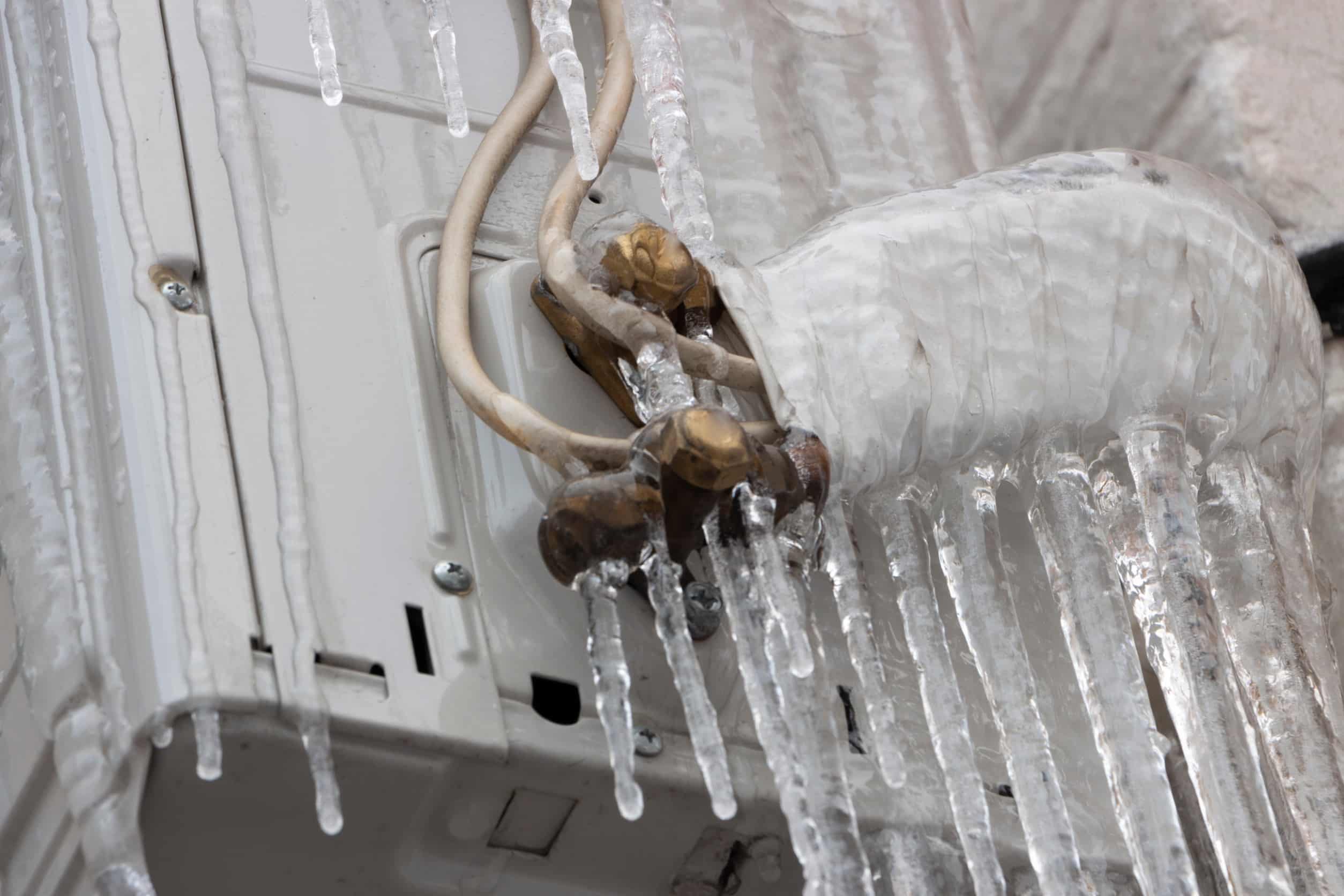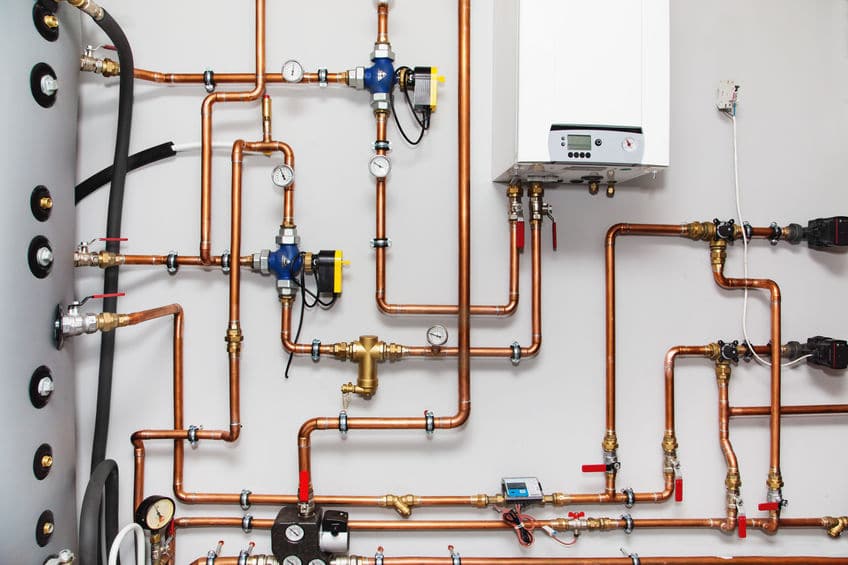Get To Know The Latest Furnace Technology
High-Efficiency Furnaces
The gas, propane, and oil furnaces of the past can’t hold a candle (or, perhaps more appropriately, a pilot light) to the efficiency and effectiveness of systems today.
The efficiency of heating systems is commonly measured using an Annual Fuel Utilization Efficiency (AFUE) score. Simply put, the heater’s AFUE percentage is the amount of heat energy that can be extracted from the fuel, versus how much of that fuel’s energy potential is wasted. A gas furnace with 70% AFUE converts 70% of the natural gas into heat, with the remaining 30% being lost through exhaust. In other words, the higher the AFUE, the more efficient the system is.
Starting in the 1990s, new regulations led to a new efficiency floor for furnaces: 78% AFUE. In the decades since, however, furnaces have continued to become more efficient, climbing the AFUE scale. Some of today’s furnaces scrape the very top of the scale, topping out at 97% or 98% AFUE. These high-efficiency systems waste very little energy.
Efficiency isn’t always what it seems
Many homeowners mistakenly think that electric furnaces are cheaper to operate than gas furnaces. After all, electric furnaces have 100% AFUE—there’s no wasted energy at all! However, just because electric systems are technically more efficient doesn’t mean you’ll see lower heating costs. Electricity is far more expensive than natural gas. Oil and propane are even pricier than electricity.
When looking at AFUE, make sure you take the cost of the fuel source into account: a less efficient gas furnace may be cheaper to run than a high-efficiency propane system. To make things even more complex, you also need to consider local energy costs.
Variable-Speed Furnaces
In a typical furnace manufactured two decades ago, the system had one mode of operation: on. When you turned the thermostat, the furnace would come online and run at its full power to heat your home to the desired temperature. It would then turn off once the temperature was reached, repeating that cycle again and again.
There are a few problems with that approach. First, furnaces (as well as heat pumps and air conditioners) use energy to start and stop, making that stop-and-go approach less than ideal. The constant “cycling” also puts unnecessary strain on the system itself. Finally, with only one speed, the furnace couldn’t just maintain a consistent temperature: more often, the result was peaks and valleys of cold and heat in the home.
Shifting gears
Variable-speed furnaces are a major improvement. Basically, these systems have “gears” they can shift into. When they just need to maintain a temperature, they can shift to a lower speed to use less energy and keep the temperature stable. This avoids the energy waste of constantly starting and stopping.
Think of variable-speed systems like a 6-speed bike. If you had a one-speed bike, you’d have to expend the same amount of energy pedaling, no matter how steep you’re climbing or how fast you’re going. In the end, that’s going to result in a lot of wasted energy (and sore legs!). However, with a 6-speed, you can shift up or down to adjust resistance and conserve energy. A variable-speed furnace is like that: it can run at lower or higher speeds as needed, which helps it conserve energy.
A comfortable, quiet home
That precision control also means you’ll have a more comfortable home. Because the variable-speed system can slow or speed up, it can heat your home without making it too hot or leaving it too cold. That’s a big benefit of switching to variable speed, but here’s one more: variable-speed systems, when running at their lower gear, are much quieter than a normal furnace. That’s just one less annoyance in your life.
Hybrid Furnaces
Hybrid furnace systems contain not just one, but two heating devices: a gas furnace and a heat pump. Hybrid systems are ideal for people that are seeking a two-in-one solution that can both heat and cool the home. In addition, hybrid systems have versatility in the fall and spring seasons, where they can heat your home at a lower energy cost than running your furnace. Let’s dive in and discuss this new furnace technology.
A system for all seasons
In the fall, when night temperatures begin to drop but it’s not too cold out, the hybrid system can use the heat pump to warm your home. As with all heat pumps, this works by pulling heat energy out of the outside air, and then using refrigerant to move that energy inside the home. In our mild winter climate here in Louisiana, you’ll get a lot of use out of this mode. Plus, because moving heat energy is less intense than creating it, you’ll save on your energy costs versus running the furnace.
Versatility for the summer ahead
Of course, heat pumps can also reverse operation and function akin to standard air conditioners: drawing heat energy out of the inside of your home and transferring it outside, thereby cooling the air inside your home. This means that a hybrid furnace system is quite literally an HVAC system for all seasons.
The automation features of a smart thermostat can help you save energy, lowering your energy bills.
Smart Home Integration
The smart home is in vogue. From smart speakers that allow you to control your lights with your voice to smart appliances, more and more homeowners are making their homes more integrated and convenient. Given how important it is to live in your home, your heating and cooling systems aren’t left behind. With a programmable thermostat—also known as a “smart thermostat”—homeowners have full control over the comfort in their home.
While there are a variety of models and brands out there, most programmable thermostats have these three main features in common:
-
Automated Temperature Control: You can set up a temperature schedule for your home that accounts for when you’re regularly away or at home. This helps cut down on your heating and cooling costs throughout the year, saving you money.
-
Smartphone App Control: Smart thermostats are connected to the internet and allow you to control the thermostat from your phone. Away on vacation, but need to turn on the heating for the house-sitter? With the smartphone app, it’s easy.
-
Voice Technology Integration: Most smart thermostats are compatible with smart speakers. This allows you to control the temperature settings with your voice from anywhere in your home.
Given their ability to save homeowners money and make their lives more convenient, it’s no wonder why programmable thermostats are so popular.
For Furnace Technology Experts, Call Our Team at Southern Air
If you want more information about the latest heating systems and furnace technology, call the team at Southern Air Heating & Cooling. We have been serving Shreveport, Monroe, and Alexandria and surrounding areas since 1993. Contact us today!




